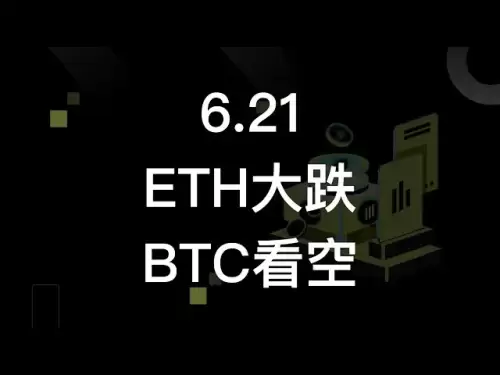-
 Bitcoin
Bitcoin $103,456.1111
0.49% -
 Ethereum
Ethereum $2,414.9631
0.02% -
 Tether USDt
Tether USDt $1.0006
0.05% -
 XRP
XRP $2.1083
0.24% -
 BNB
BNB $634.8760
-0.76% -
 Solana
Solana $139.8437
1.94% -
 USDC
USDC $0.9998
-0.01% -
 TRON
TRON $0.2737
0.97% -
 Dogecoin
Dogecoin $0.1602
0.20% -
 Cardano
Cardano $0.5737
1.08% -
 Hyperliquid
Hyperliquid $32.9779
-2.54% -
 Bitcoin Cash
Bitcoin Cash $474.8886
-1.80% -
 Sui
Sui $2.6272
-1.99% -
 Chainlink
Chainlink $12.4878
0.14% -
 UNUS SED LEO
UNUS SED LEO $8.9234
0.35% -
 Stellar
Stellar $0.2411
-0.18% -
 Avalanche
Avalanche $17.0274
-0.70% -
 Toncoin
Toncoin $2.8936
-1.11% -
 Shiba Inu
Shiba Inu $0.0...01112
-0.58% -
 Litecoin
Litecoin $82.6982
1.33% -
 Hedera
Hedera $0.1423
-0.05% -
 Monero
Monero $314.8455
3.26% -
 Ethena USDe
Ethena USDe $1.0006
0.01% -
 Polkadot
Polkadot $3.4043
1.14% -
 Dai
Dai $0.9999
0.01% -
 Bitget Token
Bitget Token $4.2848
-0.13% -
 Uniswap
Uniswap $6.8748
-5.45% -
 Pepe
Pepe $0.0...09661
0.52% -
 Pi
Pi $0.5359
1.19% -
 Aave
Aave $242.9168
-1.03%
What is SPV (Simplified Payment Verification)?
SPV lets lightweight clients verify blockchain transactions using only block headers, improving efficiency and reducing storage, but it relies on trusted full nodes, creating a security trade-off crucial for mobile wallets.
Mar 18, 2025 at 08:42 pm
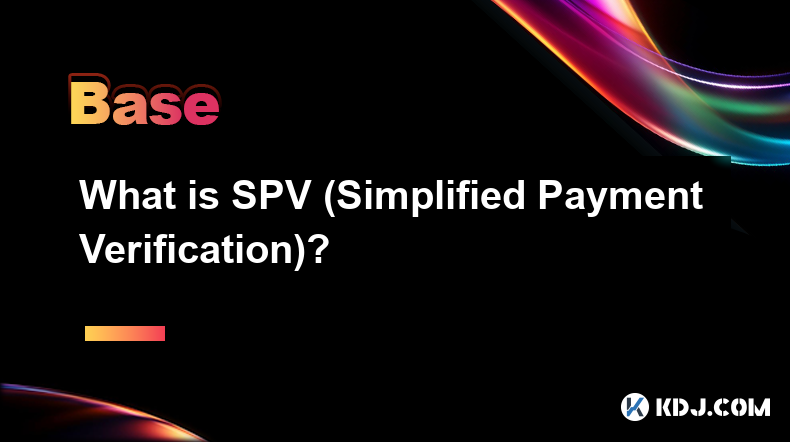
Key Points:
- SPV allows lightweight clients to verify transactions without downloading the entire blockchain.
- It relies on a subset of blockchain data, specifically block headers.
- SPV improves efficiency and reduces storage requirements.
- It introduces a trade-off between security and resource consumption.
- SPV is crucial for mobile wallets and resource-constrained devices.
- Understanding the limitations of SPV is crucial for secure usage.
What is SPV (Simplified Payment Verification)?
Simplified Payment Verification (SPV) is a method that allows lightweight clients to verify transactions on a blockchain without downloading and storing the entire blockchain. This is a significant advantage, especially for users with limited storage space or bandwidth. Instead of downloading gigabytes of blockchain data, SPV clients download only a fraction of it – specifically, the block headers. These headers contain essential information like timestamps, hash pointers, and transaction merkle roots.
How does SPV work?
SPV operates by leveraging the Merkle tree structure inherent in most blockchains. A Merkle tree is a data structure that allows for efficient verification of data integrity. When a transaction occurs, it's included in a block, and its hash is incorporated into the Merkle tree. The root of this Merkle tree is then included in the block header. An SPV client only needs the block header and a Merkle branch (the path from the transaction hash to the root) to verify the transaction's inclusion in the block.
What data does an SPV client download?
The core data an SPV client downloads are the block headers. This significantly reduces the data storage footprint compared to a full node. In addition, the client downloads the Merkle branch proving a specific transaction's inclusion in a block. This branch is relatively small compared to the entire blockchain. The client also needs to connect to at least one full node to request this data.
What are the advantages of using SPV?
- Reduced storage requirements: SPV clients only need to store block headers, drastically reducing storage needs.
- Faster synchronization: Downloading and verifying block headers is much faster than downloading the entire blockchain.
- Improved efficiency: Lower storage and bandwidth requirements translate to improved efficiency, especially on mobile devices.
- Accessibility: SPV makes blockchain technology accessible to users with limited resources.
What are the disadvantages of using SPV?
- Reduced security: SPV relies on the honesty of the full nodes it connects to. A malicious full node could provide false information, leading to incorrect transaction verification.
- Limited functionality: SPV clients cannot participate in consensus mechanisms or validate the entire blockchain, limiting their functionality.
- Vulnerability to attacks: A compromised full node can provide false data, leading to vulnerabilities and security risks. Careful selection of full nodes is critical.
How to implement SPV?
Implementing SPV is typically done through specialized software libraries and protocols. These libraries handle the complexities of Merkle tree traversal and communication with full nodes. The process is usually abstracted away from the end-user. Most mobile cryptocurrency wallets utilize SPV for efficient and lightweight operation.
Steps involved in verifying a transaction using SPV:
- Obtain the transaction details: This includes the transaction ID and relevant information.
- Connect to a full node: Establish a connection with at least one trusted full node on the network.
- Request the block header: Request the header of the block containing the transaction from the full node.
- Request the Merkle branch: Request the Merkle branch that proves the transaction’s inclusion in the block.
- Verify the Merkle proof: Use the Merkle branch and the transaction hash to verify the transaction's inclusion in the Merkle root of the block header.
- Verify the block header: Verify the block header’s validity, including its hash and its connection to the previous block headers in the blockchain.
What are the security implications of SPV?
The primary security concern with SPV is reliance on full nodes. A malicious full node could provide false information, leading to incorrect transaction verification. Therefore, selecting trustworthy and reputable full nodes is crucial. Diversifying connections to multiple nodes can also mitigate this risk. The inherent trade-off between security and resource consumption should be carefully considered.
How does SPV compare to a full node?
A full node downloads and validates the entire blockchain, providing maximum security and participation in the network consensus. SPV clients, however, only download a subset of the blockchain data, prioritizing efficiency over complete security. The choice between SPV and a full node depends on individual needs and priorities.
Frequently Asked Questions:
Q: Is SPV secure?
A: SPV is less secure than using a full node because it relies on the honesty of full nodes it connects to. However, using multiple, reputable full nodes can mitigate this risk.
Q: Can I mine cryptocurrency with an SPV client?
A: No, SPV clients cannot participate in the mining process because they don't have a complete copy of the blockchain.
Q: What are some examples of cryptocurrencies that use SPV?
A: Bitcoin and many altcoins support SPV clients through their protocols. Many mobile wallets utilize SPV for efficient transaction verification.
Q: Is SPV suitable for all users?
A: SPV is ideal for users prioritizing efficiency and limited resources, such as mobile users. However, users needing maximum security should consider running a full node.
Q: How can I ensure the security of my SPV client?
A: Use reputable software, connect to multiple diverse full nodes, and regularly update your software to address any security vulnerabilities.
Disclaimer:info@kdj.com
The information provided is not trading advice. kdj.com does not assume any responsibility for any investments made based on the information provided in this article. Cryptocurrencies are highly volatile and it is highly recommended that you invest with caution after thorough research!
If you believe that the content used on this website infringes your copyright, please contact us immediately (info@kdj.com) and we will delete it promptly.
- JasmyCoin's Price Drop: Hitting Major Levels – Is Another Dump Coming?
- 2025-06-22 00:25:12
- XRP, ETFs, and Bitcoin: A New York Minute on Crypto's Wild Ride
- 2025-06-22 01:05:12
- BNB Price, Maxwell Fork, and Market Uncertainty: Navigating the Crypto Landscape
- 2025-06-22 01:25:12
- Violet Ray Caramella: A Life of Light, Love, and Legacy
- 2025-06-22 00:25:12
- ARK Invest, Circle, and Stablecoins: Riding the Wave or Bailing Out?
- 2025-06-22 00:45:11
- Ethereum, Coinbase, and Whale Alerts: Decoding the Crypto Shuffle
- 2025-06-22 01:25:12
Related knowledge
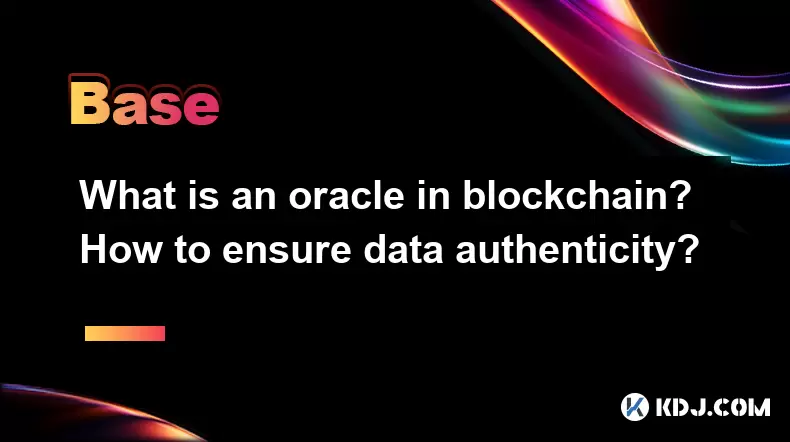
What is an oracle in blockchain? How to ensure data authenticity?
Jun 19,2025 at 08:49pm
Understanding the Role of an Oracle in BlockchainIn the context of blockchain technology, an oracle serves as a bridge between the blockchain and external data sources. While blockchains are inherently secure and decentralized, they cannot access real-world information on their own. Oracles enable smart contracts to interact with off-chain data such as ...
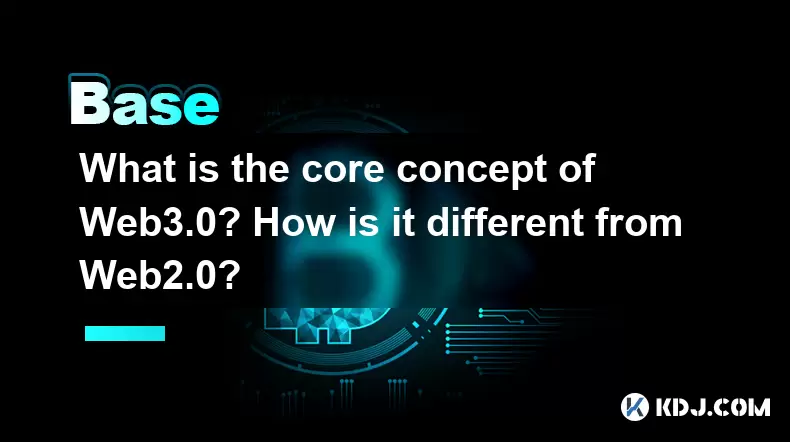
What is the core concept of Web3.0? How is it different from Web2.0?
Jun 21,2025 at 05:56pm
Decentralization as the Foundation of Web3.0The core concept of Web3.0 revolves around decentralization, which fundamentally challenges the centralized architecture of Web2.0. In Web3.0, control and ownership are distributed across a network rather than being held by a central authority or corporation. This is achieved primarily through blockchain techn...
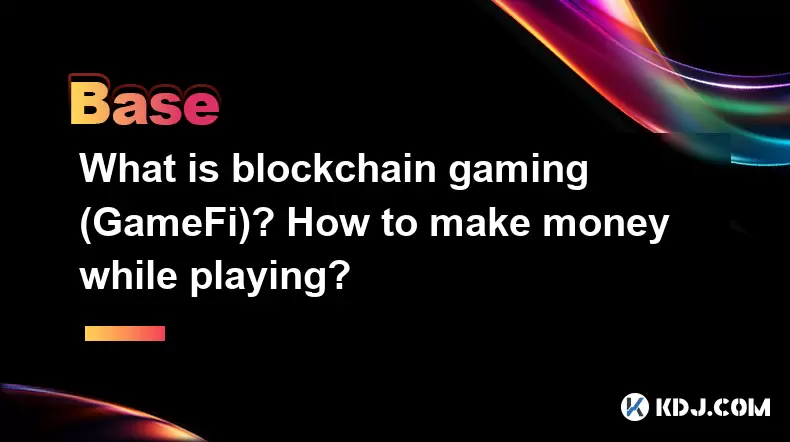
What is blockchain gaming (GameFi)? How to make money while playing?
Jun 20,2025 at 07:56am
Understanding Blockchain Gaming (GameFi)Blockchain gaming, often referred to as GameFi, is a fusion of blockchain technology and video games. It enables players to own in-game assets through non-fungible tokens (NFTs) and earn rewards via cryptocurrencies or token-based systems. Unlike traditional games where items are controlled by centralized develope...
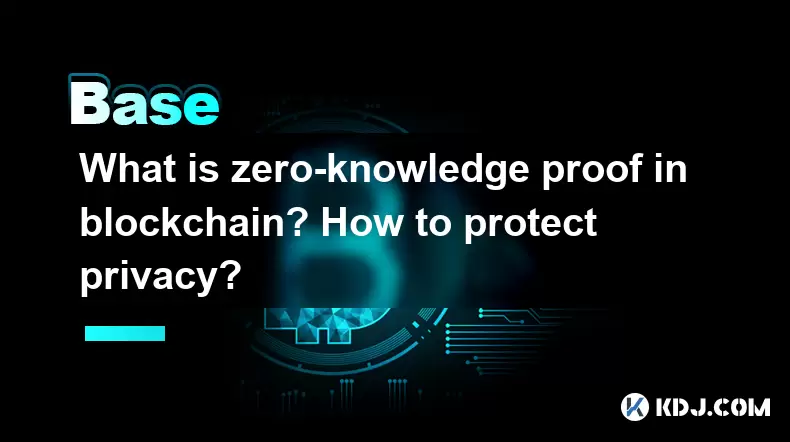
What is zero-knowledge proof in blockchain? How to protect privacy?
Jun 20,2025 at 06:28am
Understanding Zero-Knowledge Proof in BlockchainZero-knowledge proof (ZKP) is a cryptographic method that allows one party to prove to another that they know a value or piece of information without revealing the actual data. In the context of blockchain, this concept plays a crucial role in enhancing privacy and security while maintaining the integrity ...
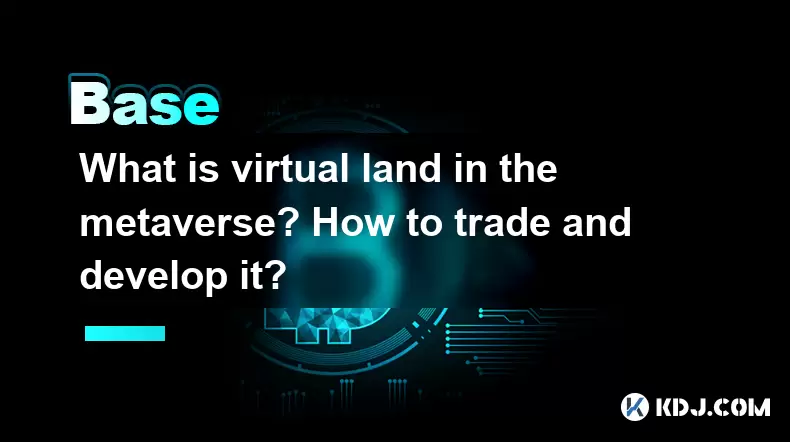
What is virtual land in the metaverse? How to trade and develop it?
Jun 20,2025 at 02:35am
Understanding Virtual Land in the MetaverseVirtual land in the metaverse refers to a digital space or plot of land within a virtual world, often represented as NFTs (non-fungible tokens) on blockchain platforms. These digital properties can be bought, sold, and developed by users, much like real estate in the physical world. Platforms such as Decentrala...
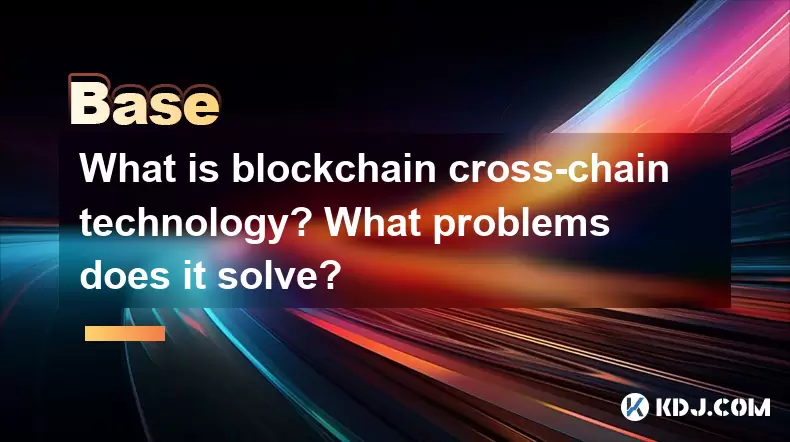
What is blockchain cross-chain technology? What problems does it solve?
Jun 20,2025 at 10:28am
Understanding the Basics of Blockchain Cross-Chain TechnologyBlockchain cross-chain technology refers to a set of protocols and systems that enable interoperability between different blockchain networks. In simpler terms, it allows for the transfer of assets or data across multiple blockchains that would otherwise operate in isolation from one another. ...

What is an oracle in blockchain? How to ensure data authenticity?
Jun 19,2025 at 08:49pm
Understanding the Role of an Oracle in BlockchainIn the context of blockchain technology, an oracle serves as a bridge between the blockchain and external data sources. While blockchains are inherently secure and decentralized, they cannot access real-world information on their own. Oracles enable smart contracts to interact with off-chain data such as ...

What is the core concept of Web3.0? How is it different from Web2.0?
Jun 21,2025 at 05:56pm
Decentralization as the Foundation of Web3.0The core concept of Web3.0 revolves around decentralization, which fundamentally challenges the centralized architecture of Web2.0. In Web3.0, control and ownership are distributed across a network rather than being held by a central authority or corporation. This is achieved primarily through blockchain techn...

What is blockchain gaming (GameFi)? How to make money while playing?
Jun 20,2025 at 07:56am
Understanding Blockchain Gaming (GameFi)Blockchain gaming, often referred to as GameFi, is a fusion of blockchain technology and video games. It enables players to own in-game assets through non-fungible tokens (NFTs) and earn rewards via cryptocurrencies or token-based systems. Unlike traditional games where items are controlled by centralized develope...

What is zero-knowledge proof in blockchain? How to protect privacy?
Jun 20,2025 at 06:28am
Understanding Zero-Knowledge Proof in BlockchainZero-knowledge proof (ZKP) is a cryptographic method that allows one party to prove to another that they know a value or piece of information without revealing the actual data. In the context of blockchain, this concept plays a crucial role in enhancing privacy and security while maintaining the integrity ...

What is virtual land in the metaverse? How to trade and develop it?
Jun 20,2025 at 02:35am
Understanding Virtual Land in the MetaverseVirtual land in the metaverse refers to a digital space or plot of land within a virtual world, often represented as NFTs (non-fungible tokens) on blockchain platforms. These digital properties can be bought, sold, and developed by users, much like real estate in the physical world. Platforms such as Decentrala...

What is blockchain cross-chain technology? What problems does it solve?
Jun 20,2025 at 10:28am
Understanding the Basics of Blockchain Cross-Chain TechnologyBlockchain cross-chain technology refers to a set of protocols and systems that enable interoperability between different blockchain networks. In simpler terms, it allows for the transfer of assets or data across multiple blockchains that would otherwise operate in isolation from one another. ...
See all articles























